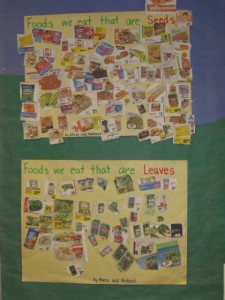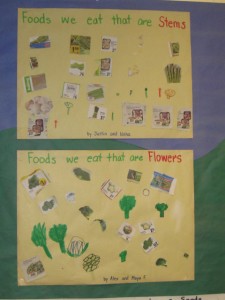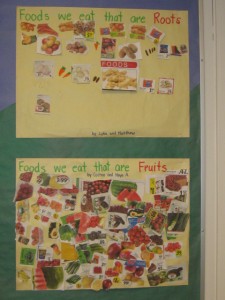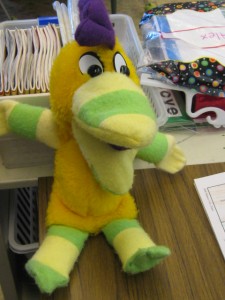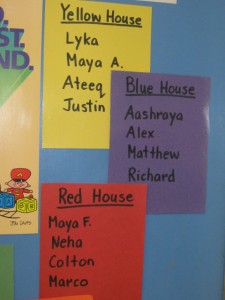Students have been learning about the parts of a plant that we eat. In partners, they used grocery flyers to make collages for: stems, flowers, roots, leaves, seeds, and fruits.
Students really enjoyed this activity. It quickly became apparent that some of the partnerships had an easier time with this activity as we found that there were more foods which came from certain parts of the plants.
Those partners who worked with ‘fruits’ and ‘seeds’ found a lot more food products from those two groupings. The most challenging plant part to find foods from was the ‘flower’ group.
When students found a food item that they didn’t need for their own collage they scurried around and gave the pictures to the partnership that did need it. This was a great collaborative effort by the whole class.
This activity also gave the students a better understanding of our food sources.

